In the field of modern manufacturing, the pursuit of efficiency, precision and automation is endless. As someone who has been deeply involved in the laser technology and industrial automation industry for many years, I often encounter questions such as whether laser rust removal machines can be connected to industrial robots. In this article, I will share my insights on this issue.
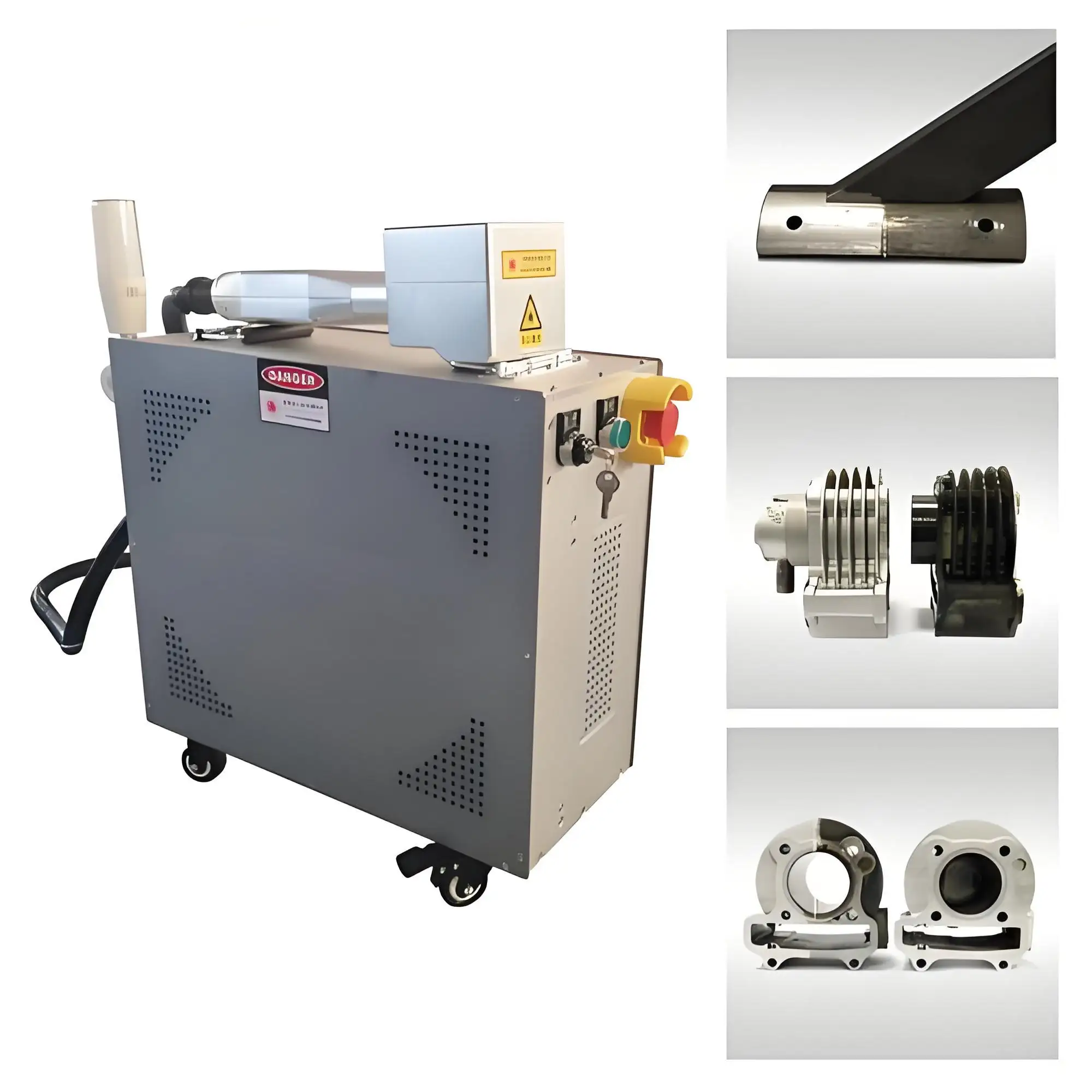
Understanding the Basics: Laser Rust Removal Machines and Industrial Robots
1. Laser Rust Removal Machines
Laser rust removal machines utilize high – energy laser beams to remove rust from various surfaces. The principle behind this technology is that the laser energy is absorbed by the rust layer, causing it to vaporize or sublimate, while leaving the underlying base material relatively unharmed. These machines offer several advantages over traditional rust removal methods, such as sandblasting or chemical treatments. They are non – contact, which means there is no physical force applied to the workpiece, reducing the risk of damage. They are also environmentally friendly as they don’t produce large amounts of waste or hazardous chemicals.
Laser rust removal machines come in different sizes and configurations, with varying laser powers and beam delivery systems. Some are designed for small – scale, manual operations, while others are more suitable for large – scale, automated production lines.
2. Industrial Robots
Industrial robots are programmable machines that are used to perform a wide range of tasks in manufacturing environments. They are known for their high precision, repeatability, and ability to work in hazardous or difficult – to – reach areas. Industrial robots can be equipped with various end – effectors, such as grippers, welders, or in this case, laser rust removal heads, to perform specific functions.
There are different types of industrial robots, including articulated robots, SCARA robots, and Cartesian robots. Articulated robots are the most common and offer a high degree of flexibility with multiple joints that allow them to move in various directions.
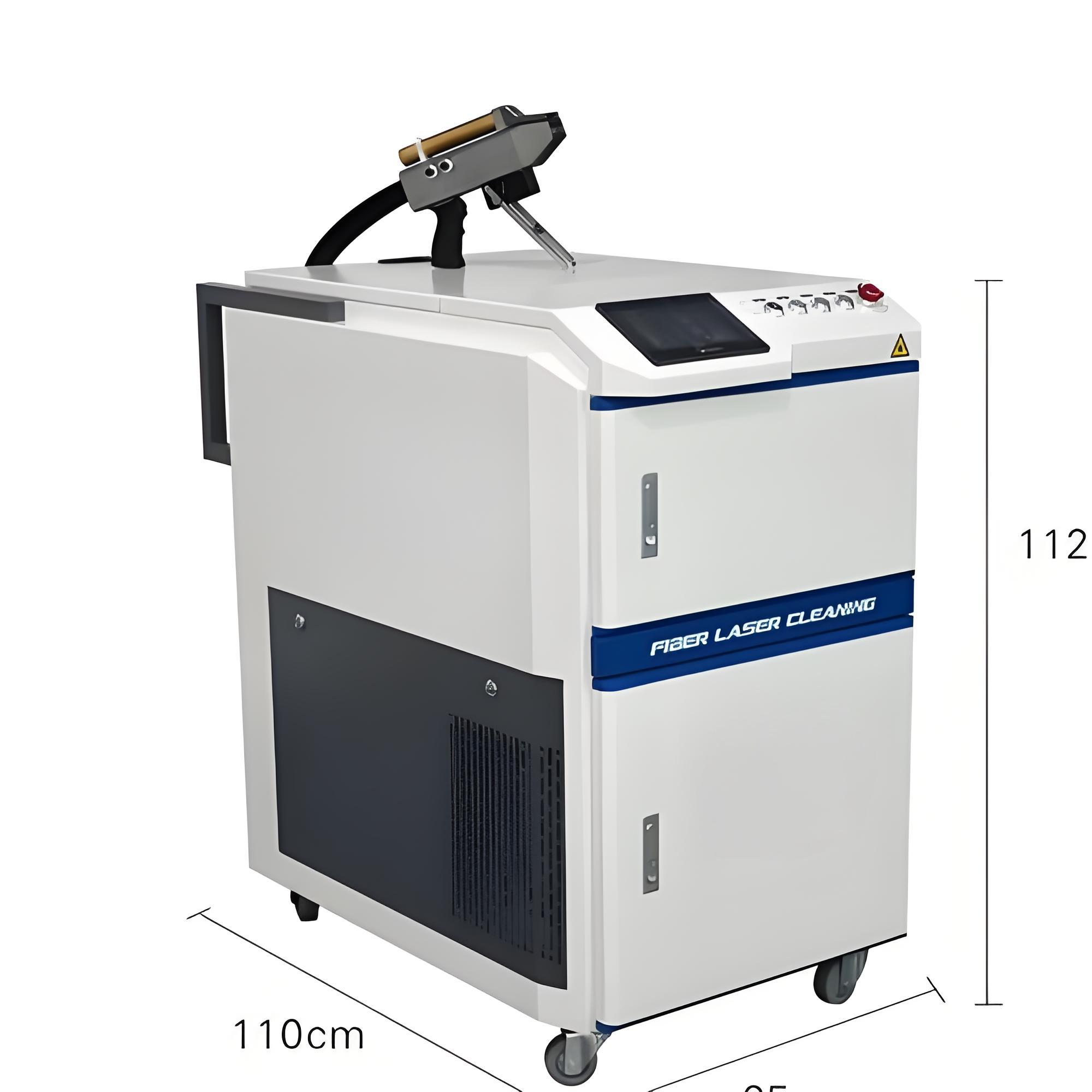
The Benefits of Connecting a Laser Rust Removal Machine to an Industrial Robot
1. Increased Flexibility
One of the major benefits of integrating a laser rust removal machine with an industrial robot is the increased flexibility it offers. An industrial robot can be easily reprogrammed to handle workpieces of different shapes, sizes, and orientations. This means that a single laser rust removal system can be used for a wide variety of applications without the need for extensive manual adjustments or the purchase of multiple specialized machines.
For example, in an automotive manufacturing plant, the robot can be programmed to remove rust from different car parts, such as chassis components, engine parts, or body panels. The robot can quickly adapt to the unique geometry of each part, ensuring that the laser beam reaches all rust – affected areas.
2. Improved Precision and Consistency
Industrial robots are known for their high precision and repeatability. When connected to a laser rust removal machine, they can ensure that the laser beam is applied to the workpiece with a high level of accuracy. This results in consistent rust removal results across all workpieces, reducing the risk of defects and improving the overall quality of the finished products.
In contrast, manual laser rust removal operations are more prone to human error, which can lead to uneven rust removal or damage to the base material. With a robotic system, the laser parameters, such as power, pulse duration, and scan speed, can be precisely controlled and maintained throughout the entire production process.

3. Enhanced Safety
Laser rust removal involves the use of high – energy lasers, which can pose a safety hazard to operators. By connecting the laser rust removal machine to an industrial robot, operators can be kept at a safe distance from the laser beam. The robot can be enclosed in a safety cell, and access to the work area can be restricted through interlocks and other safety measures. This reduces the risk of accidental exposure to the laser and other potential hazards associated with the rust removal process.
4. Higher Productivity
Industrial robots can operate continuously without getting tired, unlike human operators. They can also perform tasks at a faster rate than manual operations. By automating the laser rust removal process with a robot, the overall productivity of the production line can be significantly increased. The robot can work around the clock, processing a large number of workpieces in a short period of time, which is especially beneficial for high – volume manufacturing operations.
Technical Considerations for the Connection
1. Laser – Robot Interface
To connect a laser rust removal machine to an industrial robot, a suitable laser – robot interface is required. This interface allows the robot to communicate with the laser machine and control its operation. It should be able to transmit commands such as laser on/off, power adjustment, and scan pattern selection.
There are different types of laser – robot interfaces available, including digital I/O interfaces, Ethernet – based interfaces, and fieldbus interfaces. The choice of interface depends on the specific requirements of the laser machine and the robot controller. It’s important to ensure that the interface is compatible with both the laser and the robot to avoid any communication issues.

2. End – Effector Design
The end – effector is the part of the robot that holds the laser rust removal head. The design of the end – effector is crucial as it needs to provide a stable and accurate connection between the robot and the laser head. It should also allow for easy adjustment of the laser head’s position and orientation to ensure optimal rust removal results.
The end – effector should be made of materials that can withstand the heat generated by the laser and the mechanical stresses of the robot’s movement. It may also need to incorporate features such as cooling systems or vibration damping to improve the performance and longevity of the laser head.
3. Laser Beam Delivery
The laser beam needs to be delivered from the laser machine to the workpiece via the robot. There are different methods of laser beam delivery, including fiber optic cables and articulated arms. Fiber optic cables are commonly used as they offer high flexibility, low loss, and immunity to electromagnetic interference.
When using a fiber optic cable, it’s important to ensure that it is properly routed and protected to prevent damage. The cable should also be long enough to allow the robot to reach all areas of the workpiece. Articulated arms, on the other hand, can provide a more direct beam delivery path but may be more complex and expensive to implement.
4. Safety Systems
As mentioned earlier, safety is a critical consideration when connecting a laser rust removal machine to an industrial robot. In addition to the safety cell and interlocks, other safety systems such as laser safety goggles, emergency stop buttons, and light curtains should be implemented.
The laser safety goggles should be selected based on the wavelength and power of the laser to provide adequate protection for the operators. Emergency stop buttons should be easily accessible in case of any emergencies, and light curtains can be used to detect the presence of personnel in the work area and automatically stop the robot if necessary.

Practical Examples of Laser – Robot Integration
1. Aerospace Industry
In the aerospace industry, the quality and reliability of components are of utmost importance. Laser rust removal is often used to clean aircraft parts, such as landing gear, engine components, and structural elements. By connecting a laser rust removal machine to an industrial robot, manufacturers can achieve high – precision cleaning of complex – shaped parts with intricate geometries. The robot can navigate around the parts, ensuring that all rust and contaminants are removed without damaging the sensitive surfaces.
For example, a robotic laser rust removal system can be used to clean the inside of an aircraft engine casing. The robot can reach into the narrow passages and remove rust that may have accumulated over time, improving the performance and longevity of the engine.
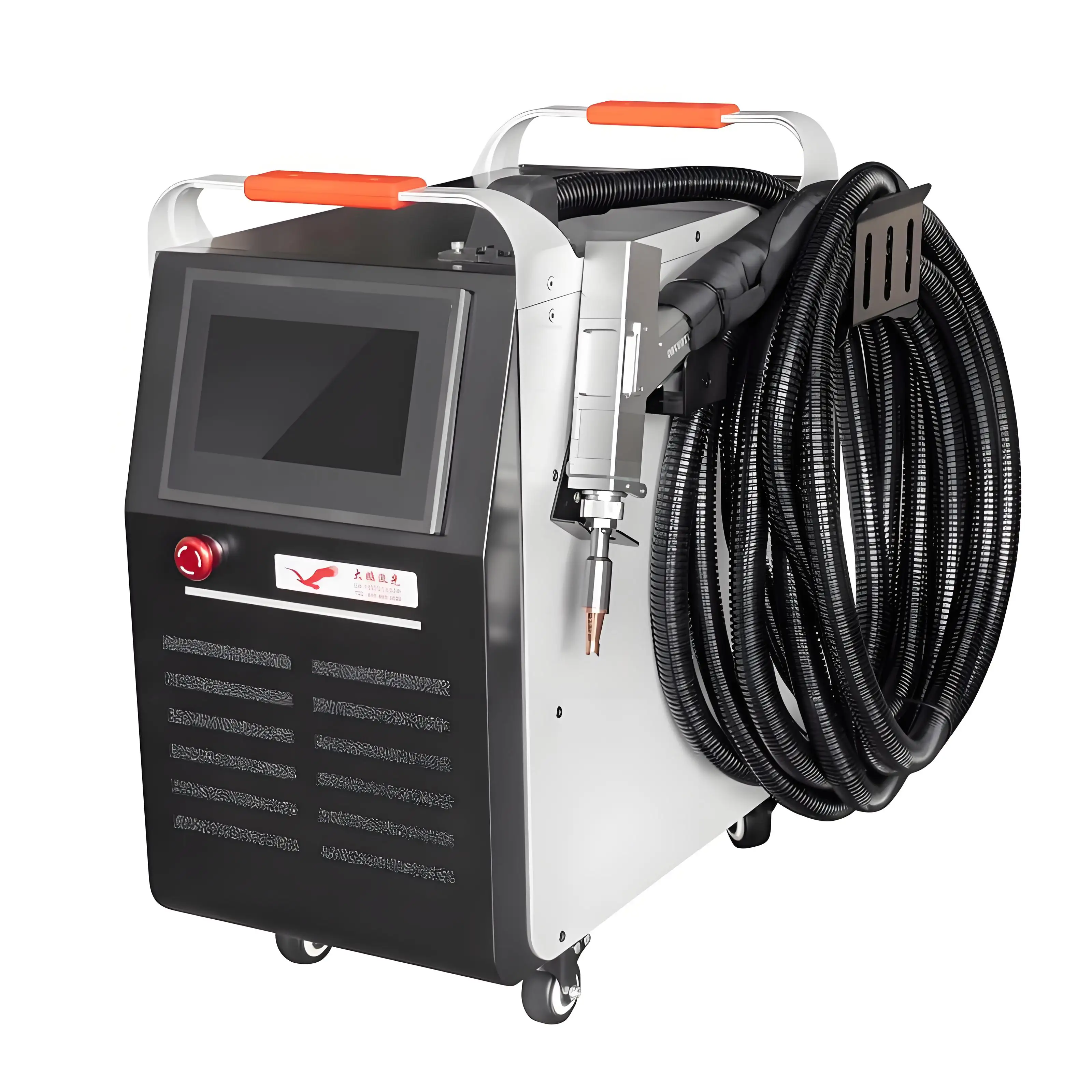
2. Automotive Industry
The automotive industry is another sector that can benefit greatly from the integration of laser rust removal machines with industrial robots. In car manufacturing, rust removal is necessary for various parts, including chassis components, suspension parts, and body panels. A robotic laser rust removal system can quickly and efficiently clean these parts, ensuring that they meet the high – quality standards required in the automotive industry.
For instance, a robot can be used to remove rust from car door frames. The robot can follow the contour of the frame, applying the laser beam with the appropriate power and scan speed to achieve a uniform and thorough rust removal.
3. Shipbuilding Industry
Shipbuilding involves working with large and heavy metal structures that are prone to rusting due to exposure to saltwater and harsh marine environments. Laser rust removal machines connected to industrial robots can be used to clean ship hulls, decks, and other components. The robots can handle the large – scale cleaning tasks efficiently, reducing the time and labor required for manual rust removal methods.
A robotic laser rust removal system can be mounted on a mobile platform and used to clean the exterior of a ship hull. The robot can move along the hull, removing rust and preparing the surface for painting or other protective coatings.
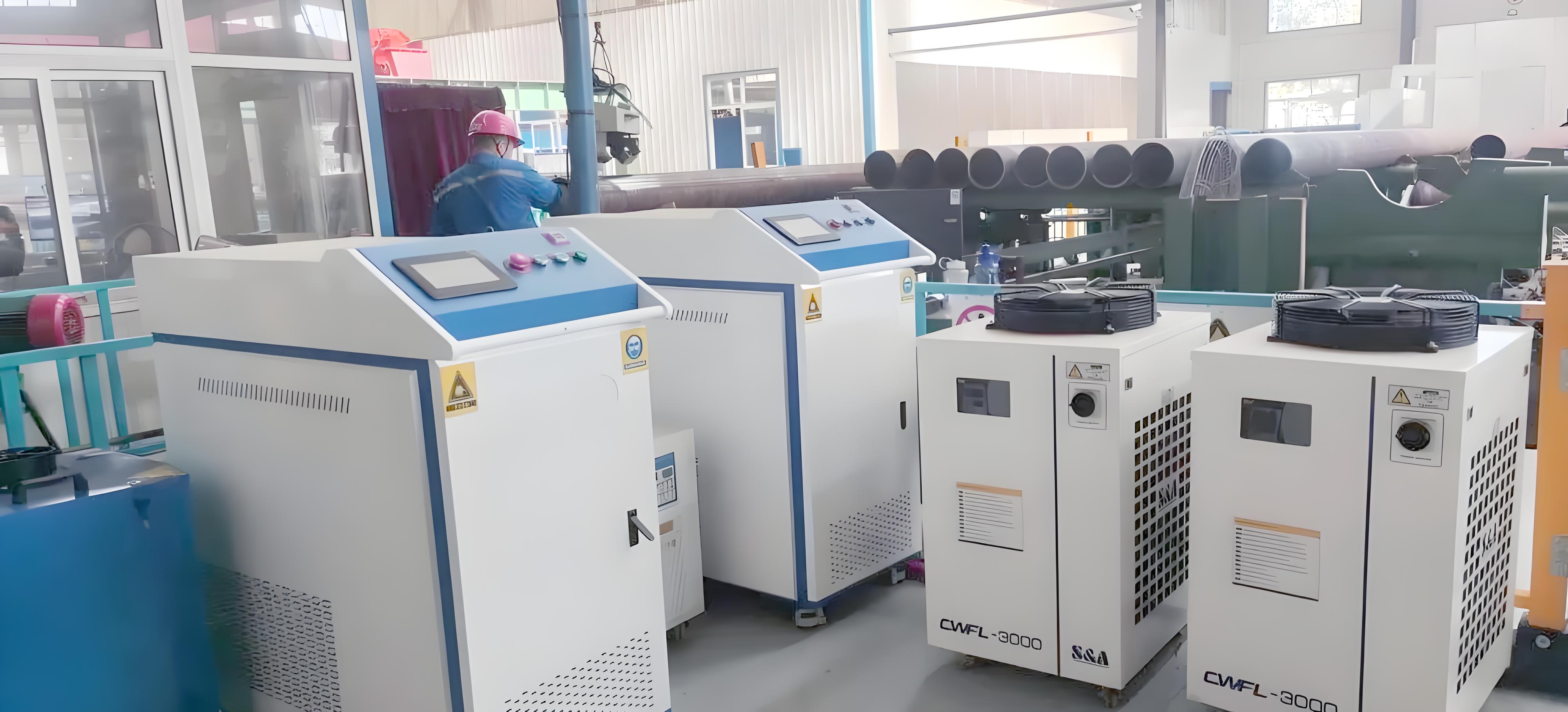
Challenges and Solutions
1. Cost
One of the main challenges of connecting a laser rust removal machine to an industrial robot is the cost. The initial investment in the laser machine, the robot, the interface, and the end – effector can be significant. However, it’s important to consider the long – term benefits, such as increased productivity, improved quality, and reduced labor costs.
To mitigate the cost, manufacturers can explore options such as leasing the equipment or partnering with automation solution providers. They can also conduct a cost – benefit analysis to determine the return on investment (ROI) of the integration.
2. Programming and Integration Complexity
Programming an industrial robot to work with a laser rust removal machine can be a complex task. It requires expertise in both robot programming and laser technology. Manufacturers may need to invest in training for their staff or hire external consultants to handle the programming and integration.
To simplify the process, some laser and robot manufacturers offer pre – programmed solutions or software tools that make it easier to set up and operate the integrated system. These tools can provide templates for common applications and reduce the time and effort required for programming.
3. Maintenance and Repair
The integrated laser – robot system requires regular maintenance to ensure its reliable operation. This includes maintaining the laser machine, the robot, and the interface. Manufacturers should establish a maintenance schedule and have a plan in place for repairing any components that may fail.
It’s also important to have spare parts on hand to minimize downtime in case of a breakdown. Some manufacturers offer maintenance contracts that provide regular maintenance services and priority access to spare parts.
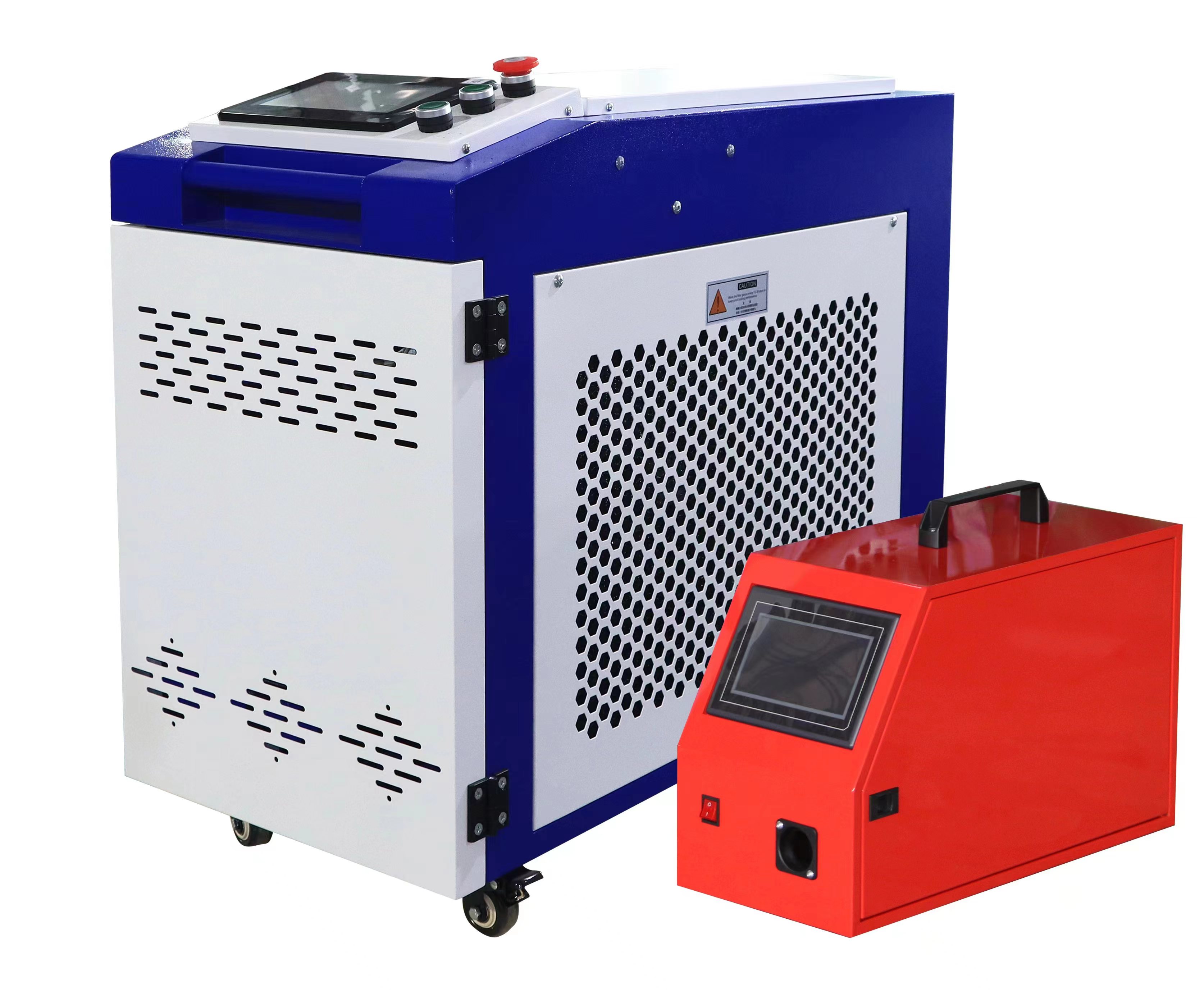
Conclusion
Connecting a laser rust removal machine to an industrial robot offers numerous benefits, including increased flexibility, improved precision and consistency, enhanced safety, and higher productivity. While there are technical challenges and cost considerations to take into account, the long – term advantages make it a worthwhile investment for many manufacturing operations.
By carefully selecting the right laser machine, robot, interface, and end – effector, and by implementing proper safety systems and maintenance procedures, manufacturers can successfully integrate these two technologies and achieve high – quality rust removal results in a more efficient and automated way. As the demand for automation and precision in manufacturing continues to grow, the integration of laser rust removal machines with industrial robots is likely to become even more prevalent in the future.
Related Questions
Q1: What types of industrial robots are most suitable for connecting to a laser rust removal machine?
A1: Articulated robots are generally the most suitable for connecting to a laser rust removal machine due to their high degree of flexibility and multiple joints that allow them to move in various directions. They can easily reach different areas of the workpiece and adapt to different shapes and sizes. However, SCARA robots and Cartesian robots can also be used depending on the specific application requirements. For example, SCARA robots may be suitable for applications that require high – speed, horizontal movements, while Cartesian robots can be useful for applications that involve linear, precise movements.
Q2: How do I choose the right laser power for my laser rust removal machine when connecting it to a robot?
A2: The choice of laser power depends on several factors, including the type and thickness of the rust, the material of the workpiece, and the desired rust removal speed. Thicker and more stubborn rust layers will require higher laser power. It’s important to consult with the laser manufacturer and conduct tests on sample workpieces to determine the optimal laser power for your specific application. Additionally, the robot’s movement speed and the laser’s scan pattern should also be considered when selecting the laser power to ensure efficient and effective rust removal.

Q3: Can a laser rust removal – robot system be used for other surface treatment processes besides rust removal?
A3: Yes, a laser rust removal – robot system can often be adapted for other surface treatment processes. For example, it can be used for laser cleaning, laser marking, or laser engraving. By changing the laser parameters and the end – effector, the system can perform a variety of tasks. However, it’s important to ensure that the laser machine and the robot are capable of handling the specific requirements of the new process, such as different laser wavelengths or higher precision requirements.
Q4: What are the training requirements for operating a laser rust removal – robot system?
A4: Operating a laser rust removal – robot system requires specialized training. Operators need to be trained in both laser safety and robot programming. Laser safety training should cover topics such as the hazards of laser radiation, proper use of personal protective equipment, and emergency procedures. Robot programming training should teach operators how to set up and run the robot, adjust the laser parameters, and troubleshoot common issues. Manufacturers can provide training programs for their operators, or they can send their staff to external training courses offered by laser and robot manufacturers or industry associations.
Q5: How can I ensure the long – term reliability of a laser rust removal – robot system?
A5: To ensure the long – term reliability of a laser rust removal – robot system, regular maintenance is essential. This includes cleaning the laser optics, checking the alignment of the robot and the laser beam delivery system, and inspecting and replacing worn – out components. It’s also important to follow the manufacturer’s recommendations for maintenance intervals and procedures. Additionally, keeping the system in a clean and controlled environment can help prevent dust and other contaminants from affecting its performance. Regular software updates and calibration can also contribute to the system’s reliability.






